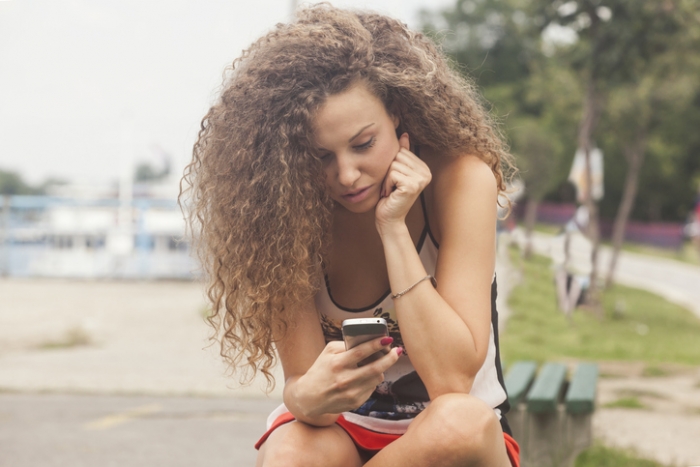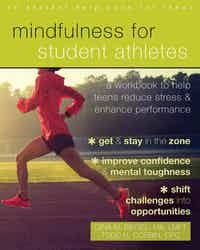By Gina Biegel, MA, LMFT, in conversation with Ariana King, senior at San Luis Obispo High School
Teen Mental Health Awareness and Burnout
I first had the opportunity to spend time with Ariana King—Ari—while consulting with San Luis Obispo High School’s Reach Club, and again while filming a short segment at the school for The Today Show. This segment was focused on the importance of mindfulness, stress reduction, and mental health awareness and support.
When meeting with Ari, I intended to focus on getting her teen’s-eye view on what I thought to be the most egregious issues surrounding teen mental health—depression, anxiety, suicidality, and self-harm. Instead I was quick to find another crucial piece of mental health awareness, what you might call a silent sleeper: assessing and managing burnout. Teens may be burned out before they even walk onto a college campus or start their careers. I was gobsmacked that teens call in sick to school to catch up on their sleep, or need to “schedule” sleep during weekends or nontraditional sleep times.
At the start of a school year, many blogs focus on managing back-to-school stress. However, the importance of promoting teen mental health and combating burnout—yes, burnout—is a significant area to hone in on. Teens are susceptible to burning out because chronic and prolonged exposure to stress increases the risk for them to develop dysregulated emotions—difficulty in modulating their emotions. Because of their prolonged period of brain plasticity, they are developmentally vulnerable to the effects of stress exposures.
The Hidden Time Zapper and the Need for Sleep
Ari shared that mental health is measured by how stressed you are. Teens today are managing a lot of stressors and are impacted by how well they are able to handle the many different stressors. Managing AP classes and competitive sports is part and parcel of life for many teens today. The other piece is social, both face-to-face and online. This generation of teens is preoccupied by comparing scores on tests such as the SAT and ACT, adding pressure to keep up with their peers. One big issue Ari and her friends are having right now is applying to colleges. The pressure of grant and scholarship applications, obtaining required references, completing college applications, and writing essay upon essay, while competing with the upper echelon of high school students who are all working just to get to the next stage of their lives can be a tipping point. Many teens are scheduled from the minute they wake up well into the hours of the night—and the following morning. Teens need to sleep eight to ten hours a night, but they are typically getting between seven and seven and one-quarter hours.(1)
Social Media: Kleenex for the Twenty-First Century
I was curious to know whether social media played a role in mental health awareness or in how teens share their struggles with one another. I learned that most of Ari’s peers who are currently dealing with depression and anxiety post that on their “finstas” (fake Instagram accounts) and that these accounts show more of the “real you” than their main Instagram accounts. They will often post a photo with a long paragraph about what is going on in their lives. On Snapchat, sometimes teens will talk about depression or anxiety on their “private story,” posting something like “Bad day, need to talk.”
She told me that most teens will share their deeper mental health problems online and not face-to-face. It appears that it feels safer for teens to share when they are having a difficult time online rather than face-to-face. The question it raises for me as a mental health professional is, will they get the help they need? What I take away from interviewing Ari is that there are many teens spending a lot of time in their own heads, in their thoughts, interacting with their social peers on a screen. When do these teens get the opportunity to feel their feelings and get support for those feelings? When do they get hugs, Kleenex, or a shoulder to lean on? I am not saying that feeling safe to share on social media is wrong for them; yet I wonder about missing that face-to-face support I got when I was in high school.
Noticing Burnout Before You’re Burned Out: Finding Your Antidote
Ari noted that, like adults, she has a never-ending to-do list and feels the pressure to keep up with that list, adding that even if she isn’t working on something, she is thinking about what she needs to be working on and having a feeling of being behind. She said, “Life is about a lot of catching up … and getting stuff done.”
I am inspired by Ari’s transparency in sharing with me. She is an achiever; a highly productive teen with a beautiful heart and warm personality. I hope she, and other teens like her, bring mindfulness into their lives, to slow down when possible, to breathe, and most importantly to look for the red flags that signal burnout: overscheduling, a never-ending to-do list, exhaustion, sleep deprivation, irritability, frustration, other mood changes, lack of interest in engaging in previously interesting activities, lack of motivation, changes in performance, problems with friends or family, and decreased self-care.
Ari’s Antidote
Being a competitive student athlete is Ari’s burnout antidote. She finds that exercise—tennis, running, and rock climbing—help her mental health. She says she looks forward to these activities, which allow her to get out of her head. She likes being part of a team and the support and camaraderie that accompany it. I gave Ari a copy of my most recent book, Mindfulness for Student Athletes, and she let me know that she enjoyed the activity Sport Sense Awareness. “It takes you out of the stress of the competitive moment and just allows you to be focused on what you are doing in that specific moment,” she said. “For tennis, being aware of your senses really helped me focus on simply watching the ball hit my racket rather than being distracted by other things.”
Download “Sport Sense Awareness” Now
Five Anti-Burnout Mindful Takeaways
- What activity or activities nourish and support your mental health? Do one of them as soon as you can.
- Next time you are feeling stuck in your head, unplug and take a short walk, scan your body, pet a pet, engage in something that gets you out of your head and into your life.
- When you are feeling a lot of pressure from your to-do list, worries, and the like, talk to a friend or family member. Talk; try face-to-face communication, or at the very least, video calling.
- When possible, nap or sleep if you are tired.
- Think of five things you are grateful for anytime day or night. Once you think of these, notice how you feel.
(1)Mindell J. A. and J. A. Owens. 2003. A Clinical Guide to Pediatric Sleep: Diagnosis and Management of Sleep Problems. Philadelphia: Lippincott Williams & Wilkins.
Gina M. Biegel, MA, LMFT, is a psychotherapist, researcher, speaker, and author in the San Francisco Bay Area who specializes in mindfulness-based work with adolescents. She is founder of Stressed Teens, which has been offering mindfulness-based stress reduction for teens (MBSR-T) to adolescents, families, schools, professionals, and the community for over a decade. She created MBSR-T to help teens in a large HMO’s outpatient department of child and adolescent psychiatry who were not receiving relief or amelioration of their physical and psychological symptoms with the use of a multitude of other evidence-based practices. An expert and pioneer in bringing mindfulness-based approaches to youth, she is author of Be Mindful and Stress Less, The Stress Reduction Workbook for Teens (first and second edition), and the Be Mindful Card Deck for Teens. She also has a mindfulness practice audio CD, Mindfulness for Teens, to complement the MBSR-T program. She provides intensive ten-week online trainings worldwide, and works with teens and families individually and in groups. Her work has been featured on The Today Show and CNN, and in Reuters, The New York Times, and Tricycle. For more information, visit her website at www.stressedteens.com.
Ariana King is a senior at San Luis Obispo High School (SLOHS), and a member of the school’s Reach Club. She plays tennis for the SLOHS team and plays violin in the San Luis Obispo Youth Symphony. Outside of school, she likes to climb, run, go to the beach, spend time with family and friends, and play guitar.



 2024 Peace Playbook: 3 Tactics to Avoid Clashes with Your Partner
2024 Peace Playbook: 3 Tactics to Avoid Clashes with Your Partner